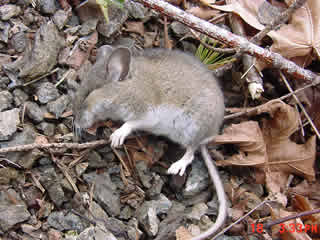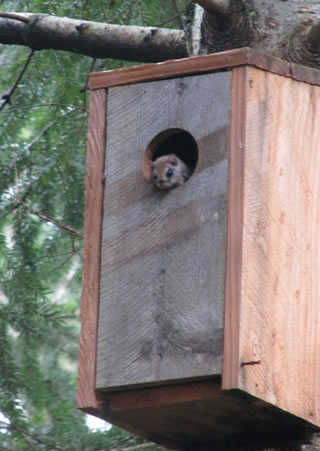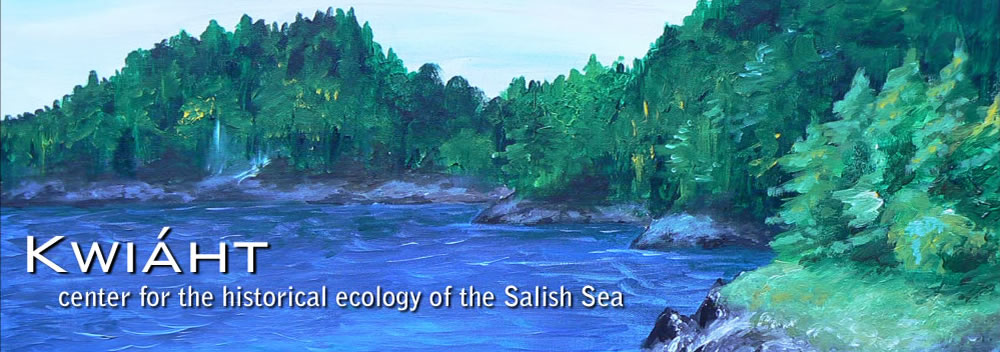Small Mammals

White Footed Deer Mouse - San Juan Island
Bats (Chiroptera) are the most diverse group of native mammals in the San Juan Islands with at least ten species identified thus far from specimens, visual observation of roosts, and/or acoustic surveys. Systematic acoustic surveys have thus far only been conducted on Lopez Island.
After bats, the most diverse mammalian group are the rodents (Rodentia) with six native species including three native squirrels (Sciuridae), one native mouse (the White Footed Deer Mouse, Peromyscus leucopus), one vole (Townsend's Vole, Microtus townsendii), and Beavers (Castor canadensis).

Northern Flying Squirrel in bird box Mount Dallas
The patchy distribution of our Sciuridae suggests direct, one-time colonization by rafting from either mainland Washington or Vancouver Island. Douglas Squirrels (Tamiasciurus douglasii) are restricted to the coniferous forests of Orcas Island. Townsend's Chipmunks (Neotamias townsendii) are restricted to Lopez Island, whereas Northern Flying Squirrels (Glaucomys sabrinus) are seen only in the woodlands of San Juan Island. Deer Mice have been observed on San Juan and Lopez Island; trapping studies in the early 1970s suggest that their distribution may have been more extensive. We observed one instance of a Deer Mouse airlifted by a Red-Tailed Hawk and dropped, still alive.
Beavers have appeared sporadically at lakes on Orcas, Lopez, Waldron, and Cypress Islands since they were hunted locally to extinction in the 19th century. Large areas of wooded wetlands on these islands reveal soil profile evidence of extensive networks of beaver dams more than a century ago. We suspect that beaver-driven shifting wetlands created most of the loamy soils on these very young glacially sculpted islands.

Beaver work
Townsend's Voles are locally abundant in the San Juan Islands and frequently regarded as pests, although our observations indicate that they play a keystone role in wildflower meadows by tilling thin, clay-rich soils and by caching and redistributing seeds, bulbs, and corms. They form distinct groups that move annually, and experience severe cycles of abundance. Voles are found on all islands of more than a few acres in extent. We have found no phenotypic evidence to support the published claim that island voles represent distinct sub-species (M. townsendii pugeti Dahlquist) and are investigating their genetic diversity and phylogeny.
River otters (Lontra Canadensis) and Mink (Neovison vison) are abundant throughout the archipelago. Otters historically expanded into the nearshore marine niche once occupied by sea otters. Our scat collections indicate that cancrid crabs, smelt and herring comprise most of their diet. Island mink also forage along seashores and shallow marine waters; while native, they have probably interbred with domestic mink released from fur farms in the islands in the 1940s. Scattered reports of other Mustelidae cannot yet be corroborated.
There is abundant evidence of two native Carnivora: Raccoons (Procyon lotor) are strong swimmers and continue to be widespread throughout the islands albeit strongly cyclical in abundance; and the Grey Wolf (Canis lupus), locally hunted to extinction in the 1870s. (Foxes, largely restricted to San Juan and Cypress Islands, were introduced by fur farms and recreational hunters in the early 20th century.)

Vagrant shrew
There is also abundant evidence for the historical abundance of two members of the deer family (Cervidae), a small and often piebald island sub-species of the Columbian Black-tailed Deer (Odocoileus hemionis columbianus), and Elk (Cervus Canadensis), present on Lopez and Orcas in the mid-19th century but now locally extinct.
We have collected a single species of shrew, the Vagrant Shrew (Sorex vagrans) from all of the large, inhabited islands, and are investigating the genetic relationships of the island populations with one another and their mainland ancestors.
